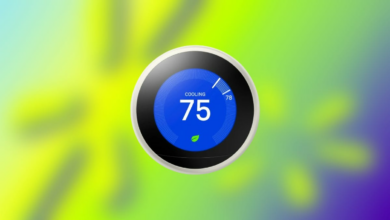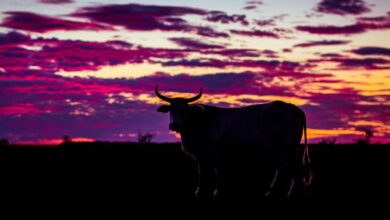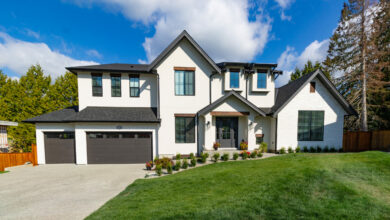Elon Musk unveils the long-awaited Robotaxi and Tesla’s autonomous future
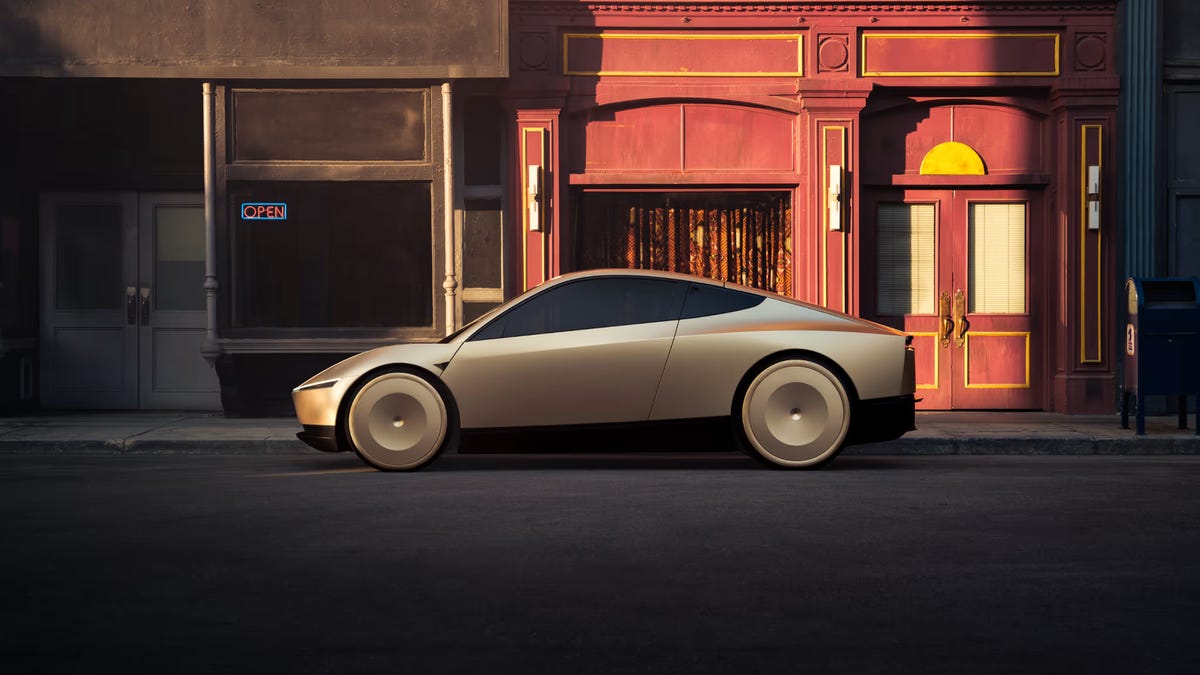

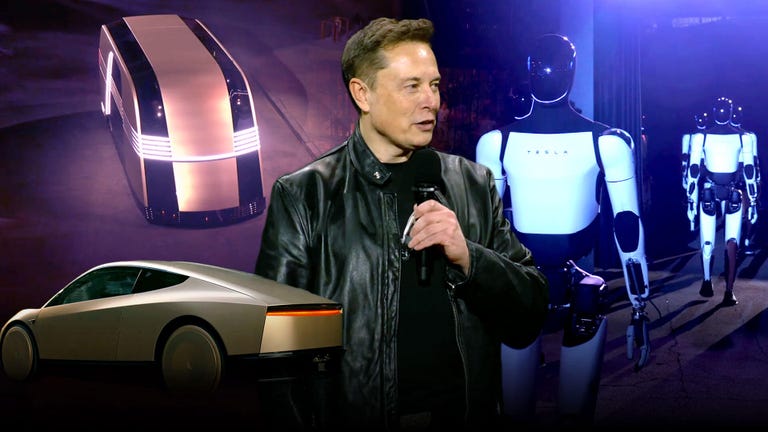
Tesla has entered the robotaxi arena. CEO Elon Musk unveiled the company’s autonomous Robotaxi vehicle Thursday during his We, Robot event at Warner Bros. Studios in Los Angeles. The car depicted is silver chrome in color and has no steering wheel or pedals. It charges via induction and uses AI to navigate roads. Musk said the car will cost “less than $30,000.”
The process of rolling out fully autonomous, unattended driving will begin next year in Texas and California with the Tesla Model 3 and Model Y, Musk said, before the eventual rollout of the Robotaxi, which Musk also called a Cybercab during the event.
“We expect the Cybercab, which is really highly optimized for autonomous transportation, to be in production in probably – well – I’m usually a little optimistic about the time frames,” Musk hesitated, “but 2026. Let’s say before 2027 I I put it this way.” That’s all subject to regulatory approval, as Musk also noted.
“I think it’s going to be a glorious future,” he said.
Musk also unveiled what is being called a Robovan, a larger autonomous vehicle that can accommodate up to 20 people in addition to transporting goods. Tesla demonstrated the Robotaxi and Robovan by selling them to Warner Bros. Studios to wander. Musk opened the event with a ride in the Robotaxi to the keynote stage.
“When we think about transportation today, there’s a lot of pain that we take for granted and that we consider normal, like having to drive around LA in a three-hour traffic jam,” Musk said during the keynote, no doubt appealing to those in attendance. “With autonomy you get your time back.”

Tesla’s Robovan can accommodate up to 20 people, according to the company.
An increasingly competitive space
The self-driving vehicle space is still in its infancy, but it is expanding rapidly. The largest players include Waymo, owned by Alphabet, which operates in cities such as San Francisco, Phoenix and Los Angeles; and Amazon-owned Zoox, which has not yet opened to public riders but is conducting tests in cities including San Francisco, Las Vegas and Seattle. Cruise, owned by GM, that was it suspended indefinitely in California last year after one of its self-driving cars hit a jaywalking pedestrian, too resumes operating manual and guided rides in certain cities.
Musk and Tesla have long promoted what the company calls Full Self-Driving, which has not lived up to its name. Instead, FSD can help a Tesla vehicle change lanes, park and navigate roads, but a driver must remain alert and behind the wheel even when the feature is activated. It’s more advanced than Tesla’s Autopilot feature, which includes cruise control-like functions and automatic steering, but can’t perform more complex tasks like responding to traffic lights and stop signs. (Tesla owners must pay up to $199 extra per month for FSD.) Earlier this year, Musk instructed Tesla employees to “install and activate” FSD software for each new customer and give it a “short test drive.”
Both Autopilot and FSD have hit speed bumps, with California’s Department of Motor Vehicles accusing Tesla of false advertising in promoting the features in 2022. The Justice Department launched a criminal investigation into the company later that year after more than a dozen crashes were recorded involving Tesla vehicles using Autopilot software. In December 2023, Tesla recalled more than 2 million vehicles due to a safety issue with Autopilot, adding a software update to ensure drivers paid attention to the road even when the feature was activated.
Yet Tesla has long promised to build a fully self-driving car, with Musk previously saying he was “very confident” the automaker could achieve full autonomy by 2021. (That obviously didn’t happen.) In fact, Musk proposed the idea of a Tesla robotaxi fleet back in 2019, saying the goal was to have 1 million robotaxis on the road by the end of 2020, with no passengers. (That didn’t happen either.)

Check this out: All announced at Tesla’s ‘We, Robot’ event
Now, with the unveiling of the Robotaxi and Robovan, Musk touted both the potential time-saving and safety benefits of the autonomous vehicles, saying you can spend more time on your phone, watching a movie or working while traveling to your destination .
“It will save lives, like a lot of lives, and prevent injuries,” Musk said. “I think we will see autonomous cars become ten times safer than a human.”
In addition to self-driving cars, Tesla also showed off developments in the Tesla Bot, which Musk said could perform various tasks such as babysitting, mowing the lawn, running errands and “just being your friend, serving drinks – whatever you can think of.” .” of, it will do.” He says the bot will ultimately cost between $20,000 and $30,000. A livestream of the We, Robot event showed the humanoids standing behind a bar and apparently serving drinks to attendees as the keynote ended.
If Musk’s timeline for getting fully autonomous cars on the road seems aggressive, it’s because Tesla has been playing catch-up with other companies that have already hit the ground running. Waymo, for example, says it provides more than 100,000 rides every week in the handful of cities in which it operates. Additionally, the Alphabet-owned company will soon expand to more cities, including Austin and Atlanta, thanks to a partnership with Uber. So the clock is ticking for Tesla. However, whether it actually meets these ambitious timelines remains to be seen.

